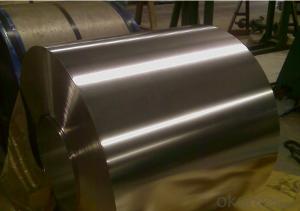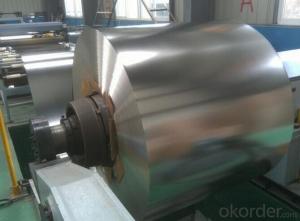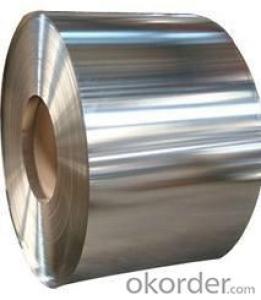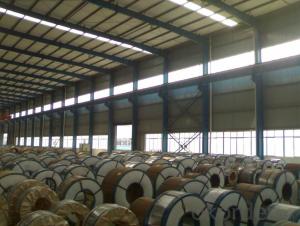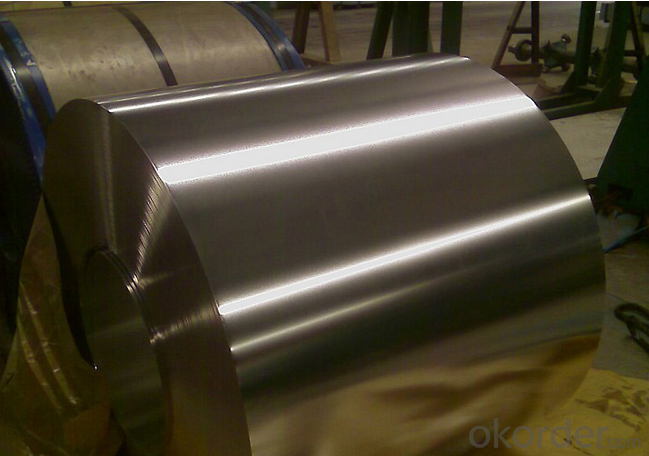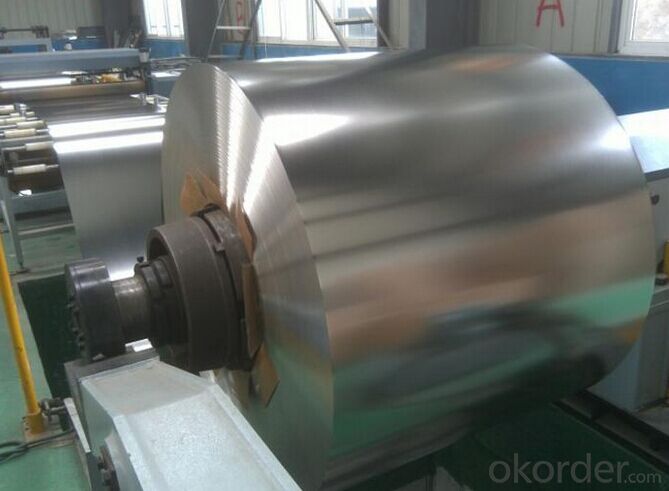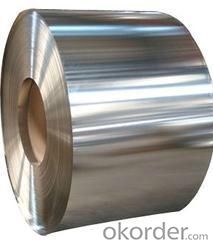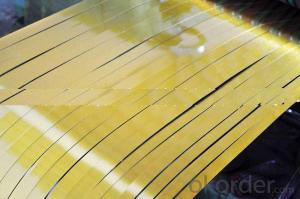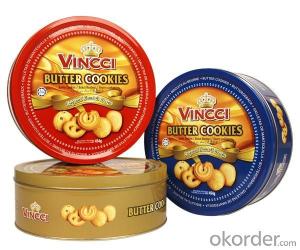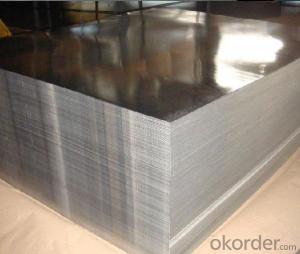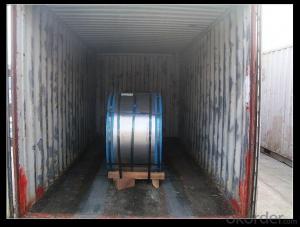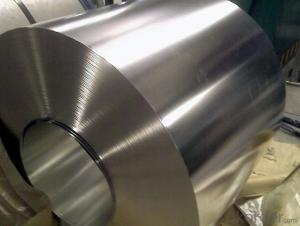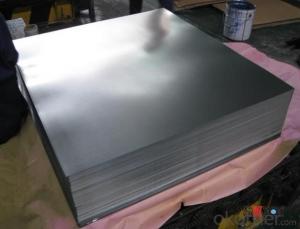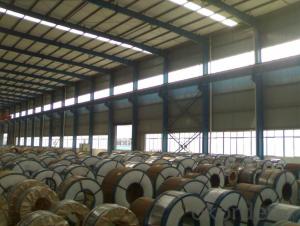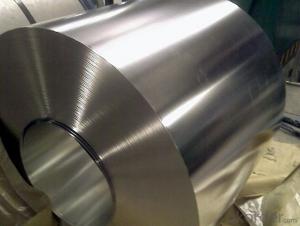Electrolytic Tinplate Coil / Sheet for Foods Packaging
- Loading Port:
- Tianjin
- Payment Terms:
- TT OR LC
- Min Order Qty:
- 25 m.t
- Supply Capability:
- 7000 m.t/month
OKorder Service Pledge
OKorder Financial Service
You Might Also Like
1.Structure of Electrolytic Tin Plate Coils and Sheets for Foods Metal Packaging Description
Electrolytic Tin Plate Coils and Sheets for Foods Metal Packaging, is one thin steel sheet with a coating of tin applied by electrolytic deposition. Tinplate made by this process is essentially a sandwich in which the central core is strip steel. This core is cleaned in a pickling solution and then fed through tanks containing electrolyte, where tin is deposited on both sides. As the strip passes between high-frequency electric induction coils, it is heated so that the tin coating melts and flows to form a lustrous coat.
2.Main Features of the Electrolytic Tin Plate Coils and Sheets for Foods Metal Packaging
Appearance – Electrolytic Tin Plate is characterized by its beautiful metallic luster. Products with various kinds of surface roughness are produced by selecting the surface finish of the substrate steel sheet.
Paintability and printability – Electrolytic Tin Plates have excellent paintability and printability. Printing is beautifully finished using various lacquers and inks.
Formability and strength – Electrolytic Tin Plates have got very good formability and strength. By selecting a proper temper grade, appropriate formability is obtained for different applications as well as the required strength after forming.
Corrosion resistance – Tinplate has got good corrosion resistance. By selecting a proper coating weight, appropriate corrosion resistance is obtained against container contents. Coated items should meet 24 hour 5 % salt spray requirement.
Solderability and weldability – Electrolytic Tin Plates can be joined both by soldering or welding. These properties of tinplate are used for making various types of cans.
Hygienic – Tin coating provides good and non toxic barrier properties to protect food products from impurities, bacteria, moisture, light and odours.
Safe – Tinplate being low weight and high strength makes food cans easy to ship and transport.
Eco friendly – Tinplate offers 100 % recyclability.
Tin is not good for low temperature applications since it changes structure and loses adhesion when exposed to temperatures below – 40 deg C.
3.Electrolytic Tin Plate Coils and Sheets for Foods Metal Packaging Images
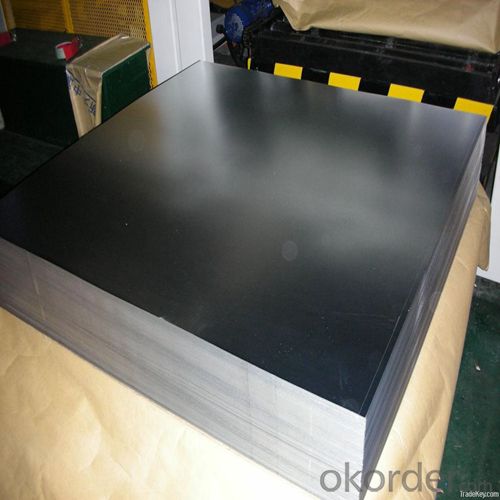
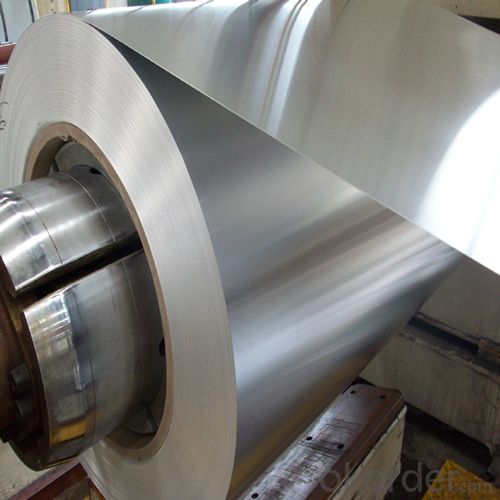
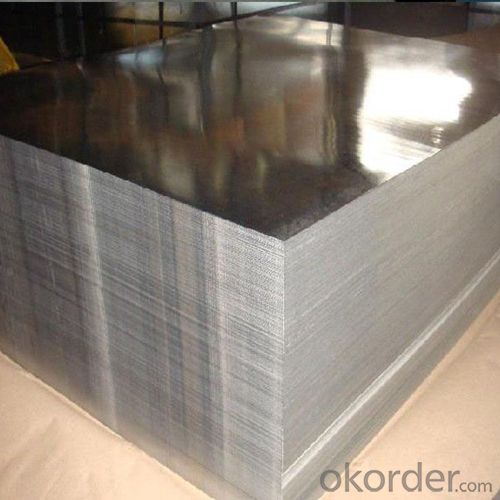
4.Electrolytic Tin Plate Coils and Sheets for Foods Metal Packaging Specification
Standard | ISO 11949 -1995, GB/T2520-2000,JIS G3303,ASTM A623, BS EN 10202
|
Material | MR,SPCC |
Thickness | 0.15mm - 0.50mm |
Width | 600mm -1150mm |
Temper | T1-T5 |
Annealing | BA & CA |
Coil Inner Diameter | 508mm |
Weight | 6-10 tons/coil 1~1.7 tons/sheets bundle |
Passivation | 311 |
Oil | DOS |
Surface | Finish,bright,stone,matte,silver |
5.FAQ of Electrolytic Tin Plate Coils and Sheets for Foods Metal Packaging
- How are the Electrolytic Tin Plates specified?
The Electrolytic Tin Plates are specified as per the steel base, extent of tempering, the coating weight, annealing method and the surface finish.
- How many types there are for base steels?
The base steels are of three types: Type MR, L, D
-What your tinplate material is used for ?
Tinplate is widely used for the packaging of products. Such as food cans,
beverage cans, pet cans, closures, general line cans and so on.
Printed Tinplate is offered!!
-How to place .an order or contact you ?
Please send us Email. we will give you a quick response in seconds .
- How is your quality ?
All our quality is prime even the secondary quality . We have many years experience
In this field with serious quality control standard . Advanced equipment, We welcome your visit to our factory .
- Q: What are the regulations regarding tinplate packaging?
- The regulations regarding tinplate packaging vary depending on the country and the specific product being packaged. However, some common regulations include restrictions on the use of certain chemicals in the coating of tinplate, requirements for labeling and product information, and guidelines for food safety and hygiene. It is important for manufacturers and distributors to familiarize themselves with the specific regulations in their target market to ensure compliance.
- Q: What are some common tinplate products?
- Some common tinplate products include food and beverage cans, aerosol cans, paint cans, metal packaging for cosmetics and personal care products, and metal containers for various industrial applications.
- Q: How is tinplate used in the food industry?
- Tinplate is widely used in the food industry for packaging purposes. It is commonly used to manufacture cans and containers for storing various food products such as canned fruits, vegetables, fish, meat, and more. Tinplate is preferred in the food industry due to its excellent resistance to corrosion, durability, and ability to maintain the quality and freshness of the packed food items. Additionally, it provides a protective barrier against external contaminants and helps in extending the shelf life of the food products.
- Q: How does tinplate contribute to the performance of ammunition?
- Tinplate contributes to the performance of ammunition by providing a durable and corrosion-resistant outer coating. This protective layer ensures that the ammunition remains intact and functional even under harsh environmental conditions, preventing rust and degradation. Additionally, tinplate's smooth surface facilitates easy loading and extraction of ammunition, enhancing reliability and efficiency during use. Overall, tinplate plays a crucial role in preserving the quality and performance of ammunition, ensuring its effectiveness and safety for users.
- Q: What is the process for printing on tinplate?
- The process for printing on tinplate involves several steps. First, the tinplate is cleaned and coated with a thin layer of primer to ensure proper adhesion of the ink. Then, the design or artwork is engraved onto a printing plate, typically made of a flexible material like rubber or plastic. This plate is then loaded onto a printing press. The tinplate is fed into the press, and the printing plate transfers the ink onto the tinplate in the desired design. The tinplate is then dried or cured to set the ink. Finally, the printed tinplate can be further processed or converted into various products like cans or packaging materials.
- Q: What are the different ways to customize tinplate packaging?
- There are several ways to customize tinplate packaging, including printing, embossing, debossing, and adding special finishes. Printing allows for the application of vibrant designs, logos, and artwork directly onto the tinplate surface. Embossing involves creating raised designs or patterns on the packaging, adding a tactile element. Debossing is the opposite, where designs are pressed into the tinplate, creating an indented effect. Special finishes, such as matte or glossy coatings, can also be applied to enhance the overall appearance and protect the packaging.
- Q: What are the main challenges in recycling tinplate?
- The main challenges in recycling tinplate include the separation of tin from the steel base, the removal of any contaminants or coatings on the tinplate, and ensuring the proper sorting and collection of tinplate waste to prevent it from ending up in landfills. Additionally, the energy-intensive process of melting and refining tinplate poses environmental concerns and requires adequate infrastructure for recycling facilities.
- Q: What are the main challenges in tinplate recycling?
- One of the main challenges in tinplate recycling is the separation of tin coating from the steel substrate, as the two materials have different melting points. Additionally, the presence of other contaminants such as lacquers and coatings on the tinplate can complicate the recycling process. Furthermore, the collection and sorting of tinplate waste can be challenging due to its prevalence in various product packaging, making it difficult to streamline the recycling system. Overall, technological advancements and increased awareness are necessary to overcome these challenges and improve the efficiency of tinplate recycling.
- Q: What industries use tinplate packaging?
- The industries that commonly use tinplate packaging include food and beverage, cosmetics, pharmaceuticals, and household products.
- Q: How does tinplate contribute to the reliability of telecommunications devices?
- Tinplate contributes to the reliability of telecommunications devices by providing a durable and corrosion-resistant coating that protects the underlying components from external factors such as moisture, humidity, and oxidation. This helps to prevent the degradation of electrical connections and ensures uninterrupted communication, ultimately enhancing the overall reliability of the devices.
Send your message to us
Electrolytic Tinplate Coil / Sheet for Foods Packaging
- Loading Port:
- Tianjin
- Payment Terms:
- TT OR LC
- Min Order Qty:
- 25 m.t
- Supply Capability:
- 7000 m.t/month
OKorder Service Pledge
OKorder Financial Service
Similar products
Hot products
Hot Searches
Related keywords
